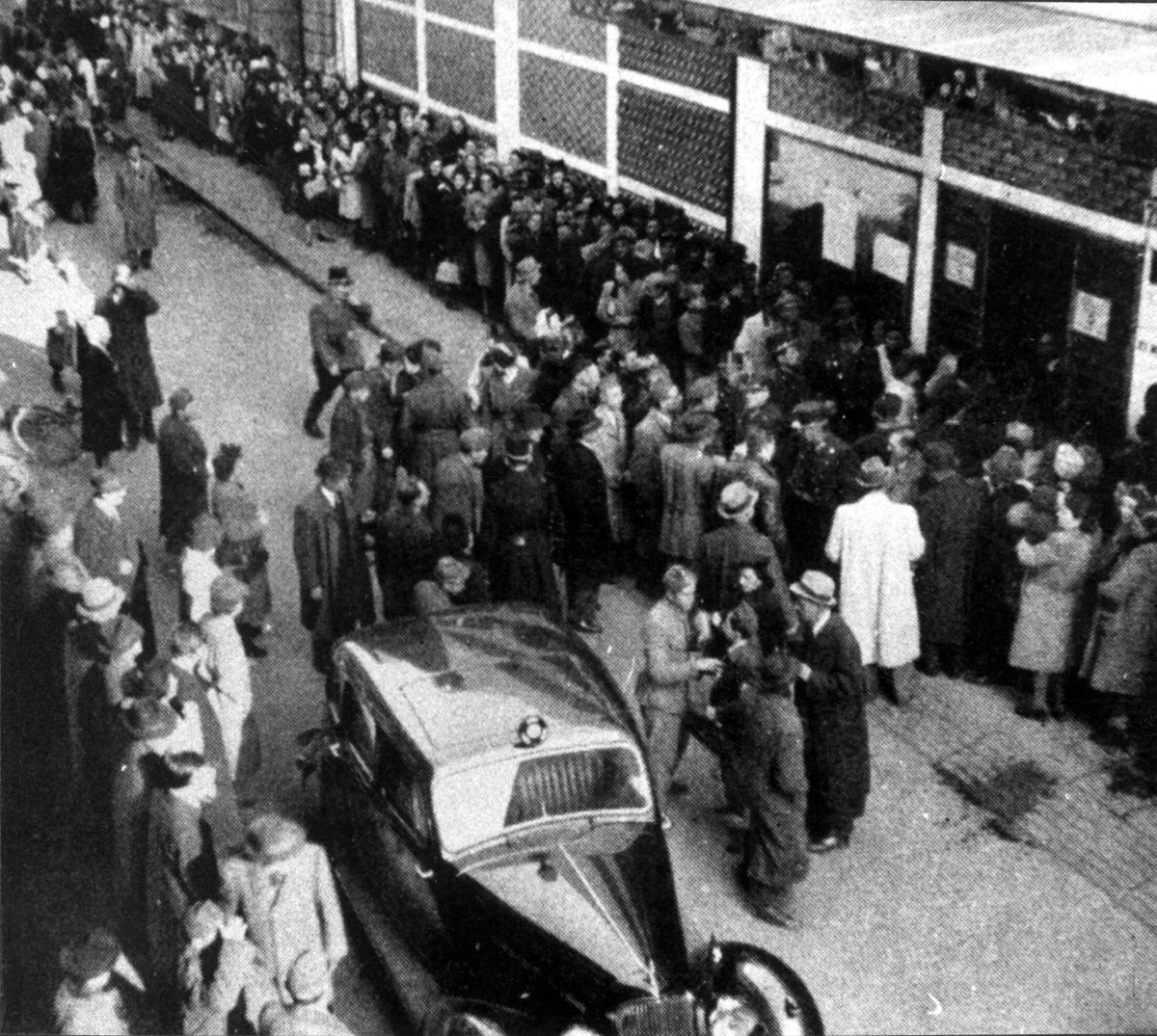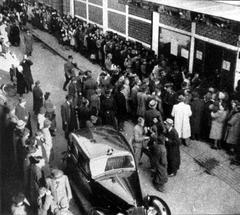
Glass House Budapest Visiting Hours, Tickets, and Historical Sites Guide
Date: 14/06/2025
Introduction: The Glass House’s Historical Significance
Nestled in the heart of Budapest’s historic Jewish Quarter, the Glass House (Üvegház) at 29 Vadász Street stands as a poignant symbol of resilience, humanitarian courage, and architectural innovation. Originally built in the early 20th century as a glass factory and showroom, this unassuming building was transformed during WWII into a sanctuary for thousands of Hungarian Jews. Under the leadership of Swiss vice-consul Carl Lutz and the Swiss Embassy, the Glass House functioned as a vital safe house, shielding its inhabitants from persecution and deportation during the Holocaust.
Today, the Glass House is not only a memorial but also an educational center, offering exhibitions, guided tours, and events that preserve the memory of those who found refuge within its walls. Its accessibility, both physically and intellectually, ensures that visitors of all backgrounds can engage with Hungary’s complex wartime history and reflect on themes of human dignity and moral courage.
For current hours, guided tour availability, and ticket bookings, consult the official Glass House Budapest website and Carl Lutz Foundation.
Contents
- Historical Context and Origins
- Carl Lutz and the Swiss Embassy’s Humanitarian Mission
- Visiting the Glass House: Hours, Tickets, and Accessibility
- Guided Tours and Exhibitions
- Visitor Tips and Practical Information
- Nearby Attractions
- Frequently Asked Questions (FAQ)
- Conclusion
- Sources and Further Reading
Historical Context and Origins
The Glass House was established in the early 20th century as a glass factory and showroom for the Weiss family, prominent glassware merchants in Budapest. Architect Lajos Kozma’s design emphasized transparency and modernity, making the building an architectural landmark (Great Synagogue Blog). With the Nazi occupation in 1944, the building’s original purpose was overtaken by the urgency of survival, and it was repurposed by the Swiss Embassy as a center of rescue operations.
Carl Lutz and the Swiss Embassy’s Humanitarian Mission
Swiss vice-consul Carl Lutz played a pivotal role in the rescue of Hungarian Jews. From the Glass House, he and his colleagues issued thousands of “Schutzbriefe” (protective letters), placing Jews and designated buildings under Swiss diplomatic protection. This courageous work, conducted with the support of the Swiss Embassy’s Emigration Department, saved thousands from deportation and death (Wikipedia, Wind and Whim). The Glass House also became a headquarters for the Jewish youth underground, coordinating rescue and resistance efforts.
Visiting the Glass House: Hours, Tickets, and Accessibility
Location
Address: 29 Vadász Street, District XIII, Budapest
Easily reached by Metro Line M3 (Nyugati pályaudvar or Arany János utca), tram lines 4 or 6, and several bus routes. The site is within walking distance of other major attractions in Budapest’s Jewish Quarter (cityseeker.com).
Opening Hours
- Tuesday–Sunday: 10:00 AM – 5:00 PM (some sources note 6:00 PM)
- Closed: Mondays, select Jewish and national holidays
Note: Visiting hours may vary. Always confirm on the official website or Carl Lutz Foundation.
Ticket Prices
- Adults: 2,000–2,500 HUF (approx. €5.50–€6.50)
- Students/Seniors: 1,500 HUF (approx. €4)
- Children under 12 or 6: Free (depending on ticketing policy)
- Group discounts: Available
How to Buy Tickets:
Tickets can be purchased online via the official site or at the entrance. Advance booking is strongly recommended due to limited capacity and the museum’s popularity, especially during peak tourist seasons.
Accessibility
The Glass House is wheelchair accessible. Ramps and elevators are available, though some areas may have restricted access due to the building’s historical status. Visitors with specific needs should contact the museum ahead of time.
Guided Tours and Exhibitions
Guided Tours
- Languages: English, Hungarian, and German
- Duration: 60–90 minutes
- Booking: Required for individuals and groups; reserve via the official website or Machteret 1944 Foundation
- Content: Tours cover the building’s transformation, Carl Lutz’s rescue operations, and personal survivor testimonies. Guides are often historians or descendants of survivors.
Exhibitions and Memorials
-
Permanent Exhibitions:
- Original “Schutzbriefe” protective passes
- Historical documents and artifacts from 1944–45
- Photographs and survivor testimonies
- Memorial wall with names of those rescued and those lost
-
Temporary Exhibitions:
- Contemporary art, such as “Glassification.hu”
- Special performances and cultural events (Glassification.hu)
-
Multimedia and Virtual Tours:
- Digital archives, video testimonies, and a virtual tour are available on the official website.
Visitor Tips and Practical Information
- Dress Code: Dress respectfully in recognition of the site’s solemn history.
- Photography: Permitted in most areas, but flash and tripods are not allowed. Always ask your guide about restrictions.
- Duration: Allow 1.5–2 hours for your visit.
- Facilities: Restrooms and a small gift shop (books, educational materials, souvenirs) on-site. No café, but many nearby dining options.
- Safety: The area is safe and well-patrolled. Usual urban precautions apply (Travellers Worldwide).
- Currency: Hungarian Forint (HUF); cards widely accepted, cash useful for small purchases (Trip to Budapest).
- Language: English widely spoken; using basic Hungarian phrases is appreciated.
- Tipping: 10–15% for guides and in restaurants is customary.
Nearby Attractions
Enhance your understanding of Budapest’s Jewish heritage and Holocaust remembrance by visiting:
- Dohány Street Synagogue: Europe’s largest synagogue, with museum and memorial park.
- Shoes on the Danube Bank: Iconic riverside memorial.
- Raoul Wallenberg Memorial Park: Dedicated to another WWII rescuer.
- Jewish Museum and Budapest Jewish Quarter: Walking distance from the Glass House.
Frequently Asked Questions (FAQ)
Q: How do I book tickets for the Glass House?
A: Book online via the official site or Machteret 1944 Foundation. On-site purchase possible, but advance booking is advised.
Q: Are guided tours available in other languages?
A: Tours are primarily in English and Hungarian; inquire in advance for other languages.
Q: Is the Glass House accessible for wheelchair users?
A: Most areas are accessible; contact the venue for specific needs.
Q: Can I take photographs inside?
A: Yes, but some restrictions apply. Always confirm with your guide.
Q: How long should I plan for a visit?
A: Allocate 1.5–2 hours to fully experience the museum and exhibitions.
Visuals and Media
High-quality images and virtual tours are available on the official website.
Conclusion
The Glass House Budapest is a living testament to the extraordinary humanitarian efforts of Carl Lutz and countless unsung heroes. Its preserved architecture, evocative exhibitions, and educational programs make it a vital destination for anyone interested in history, remembrance, and human rights. Plan your visit with care: book tickets in advance, allow ample time, and consider exploring nearby Jewish heritage sites for a comprehensive understanding of Budapest’s past. Download the Audiala app for guided audio tours and stay connected for updates on special events and exhibitions.
Sources and Further Reading
- Glass House Budapest Official Website
- Carl Lutz Foundation
- Machteret 1944 Foundation – The Glass House as a Rescue Site
- Great Synagogue Blog – Jewish Budapest: Carl Lutz and the Glass House
- Cityseeker – Glass House Budapest
- Trip.com – The Glass House Memorial Museum
- Budapest by Locals – Visiting Budapest in June
- Wind and Whim – Holocaust Rescue Stories
- Glassification.hu
- Travellers Worldwide
- Trip to Budapest – Practical Tips








































































































































































